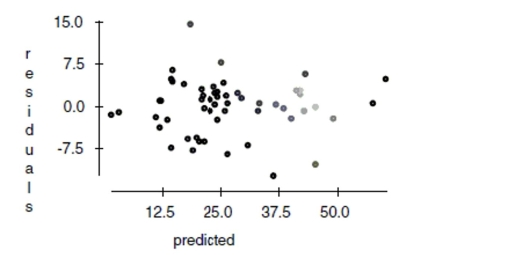It is possible that the distance that a city is from the ocean could affect its average January
low temperature. Coast gives an approximate distance of each city from the East Coast or
West Coast (whichever is nearer). Including it in the regression yields the following
regression table: Dependent variable is:JanTemp
R squared R squared (adjusted) with degrees of freedom
And here is a scatterplot of the residuals: 
Definitions:
Normative Question
A question that addresses what ought to be, focusing on subjective judgments or prescriptions about economic policies.
Normative Statement
A statement expressing a value judgment about what ought to be, rather than stating objective facts or describing what currently exists.
Grade Point Average
A numerical calculation representing the average value of the accumulated final grades earned over time, used in schools and universities.
Positive Statement
A factual statement that can be tested and validated, describing the world as it is.
Q9: Cloning A polling organization is investigating public
Q10: Carbon dating QuarkNet, a project funded
Q34: A common objective for many school
Q36: Which is true of the data shown
Q69: Dimes minted in the United States average
Q80: Explain why the last plan suggested above,
Q224: Is this study blind?
Q473: During a chemistry lab, students were
Q548: Growth A scientist is running an experiment
Q608: According to the American Pet Products Manufacturers